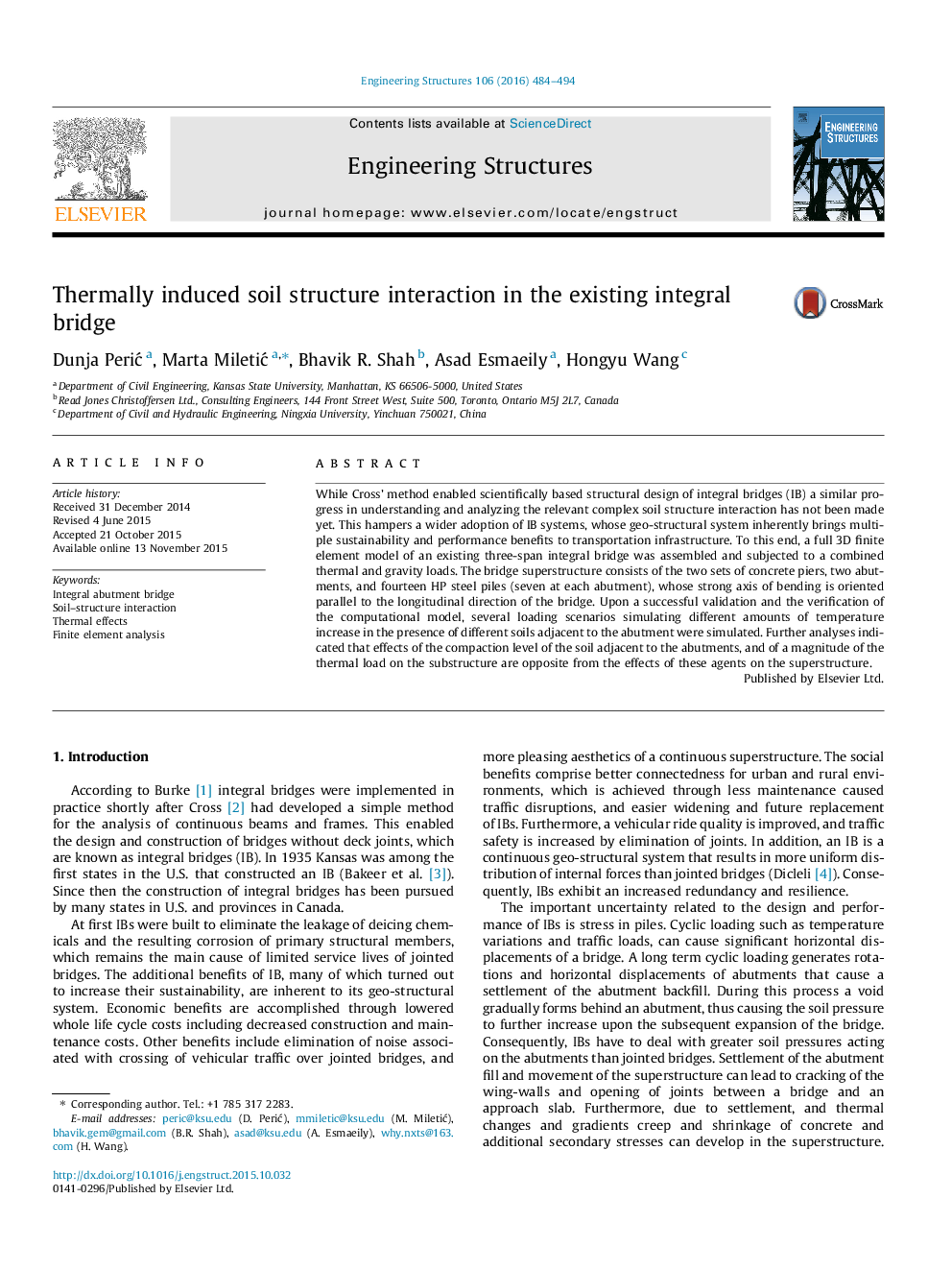| کد مقاله | کد نشریه | سال انتشار | مقاله انگلیسی | نسخه تمام متن |
|---|---|---|---|---|
| 266007 | 504338 | 2016 | 11 صفحه PDF | دانلود رایگان |
• Effects of temperature changes on behavior of the integral bridge were evaluated.
• Effects of the compaction levels of the soil surrounding abutments were evaluated.
• Presence of loose soil adjacent to abutments is critical for design of substructure.
• Presence of dense soil adjacent to abutments is critical for design of superstructure.
While Cross’ method enabled scientifically based structural design of integral bridges (IB) a similar progress in understanding and analyzing the relevant complex soil structure interaction has not been made yet. This hampers a wider adoption of IB systems, whose geo-structural system inherently brings multiple sustainability and performance benefits to transportation infrastructure. To this end, a full 3D finite element model of an existing three-span integral bridge was assembled and subjected to a combined thermal and gravity loads. The bridge superstructure consists of the two sets of concrete piers, two abutments, and fourteen HP steel piles (seven at each abutment), whose strong axis of bending is oriented parallel to the longitudinal direction of the bridge. Upon a successful validation and the verification of the computational model, several loading scenarios simulating different amounts of temperature increase in the presence of different soils adjacent to the abutment were simulated. Further analyses indicated that effects of the compaction level of the soil adjacent to the abutments, and of a magnitude of the thermal load on the substructure are opposite from the effects of these agents on the superstructure.
Journal: Engineering Structures - Volume 106, 1 January 2016, Pages 484–494
